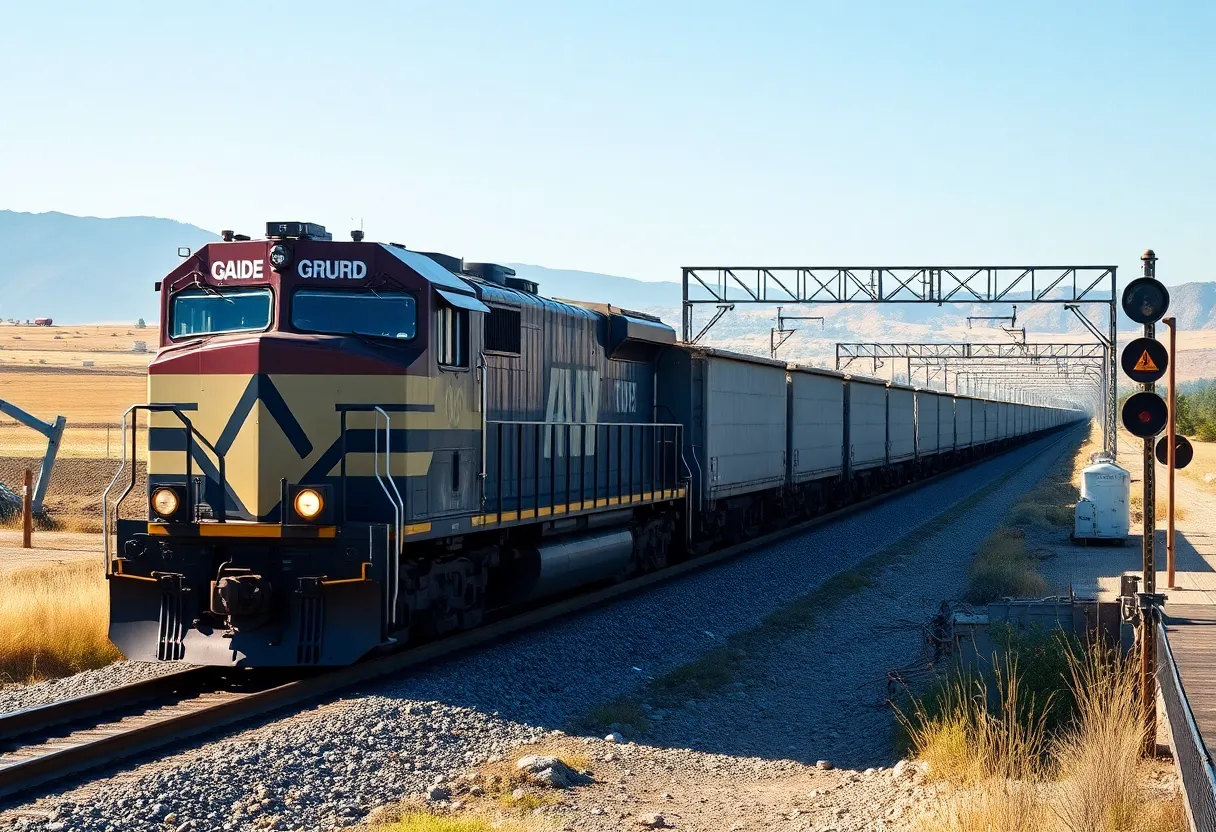News Summary
California is advancing a bill, Senate Bill 667, to limit freight train lengths to 7,500 feet, enhancing safety measures such as wayside detectors. While supporters, including the Brotherhood of Locomotive Engineers, advocate for the changes to prevent accidents, concerns remain regarding federal preemption and potential delays for passenger trains. The legislation aims to address public safety following recent derailments while balancing efficiency in rail operations.
California Takes Steps to Rethink Freight Train Safety
In a bid to enhance safety and improve train operations, California is moving forward with a significant bill aimed at limiting the length of freight trains. The legislation, known as Senate Bill 667, was introduced by State Senator Bob Archuleta from Norwalk and just recently received a thumbs up from the Senate Committee on Energy, Utilities, and Communications, passing with a 12-4 vote on April 21.
What’s in the Bill?
So, what does this bill entail? For starters, it aims to cap freight train lengths at a maximum of 7,500 feet. This measure isn’t just about making trains shorter for the sake of it; it also includes several important safety requirements. One key stipulation is that freight trains must have wayside detectors installed every 10 miles to monitor components like hotbox, hot wheel, and dragging equipment, ensuring any potential problems can be identified early on before they escalate into serious issues.
In addition, if a train needs to stop for any reason, it has to be cut or relocated to avoid blocking grade crossings. This change is particularly critical for emergency service access, as long-standing traffic jams caused by stopped trains can delay vital services when every second counts.
Penalties for Non-Compliance
Concerns and Considerations
However, not everyone is on board with this legislation. Some committee members expressed concerns about the potential for federal preemption, meaning that the federal government could step in and override state regulations. This scenario often arises when it comes to interstate commerce, and it’s a fear voiced especially by Committee Chair Josh Becker, who raised questions about how these new regulations might affect the movement of goods across the state and eventually lead to higher consumer prices.
The bill follows the troubling lessons learned from the recent train derailment in East Palestine, Ohio, which was caused by an overheated wheel bearing. Advocates for the changes argue that implementing shorter trains could effectively bolster safety measures and prevent such tragic accidents from happening in California.
Who’s Supporting and Opposing the Bill?
Supporters, including the Brotherhood of Locomotive Engineers and Trainmen, firmly believe that implementing shorter freight trains will minimize risks and enhance safety on the tracks. However, there are opponents who highlight advances in railroad technology. They argue that improvements already in place might effectively address safety concerns without the need for additional regulations on train lengths.
Furthermore, there is a concern that an increase in freight trains due to the length limitation could inadvertently lead to significant delays for passenger train services. This potential ripple effect raises eyebrows among commuters and several unions who are being impacted by these changes.
Next Steps for the Bill
The bill will now advance to the Senate Transportation Committee, where supporters and critics alike will continue to voice their opinions on the proposed regulations. As it stands, all Democrat members of the committee voted in favor of the legislation, while four Republican members pushed back against it.
Prior to moving forward, some Democratic lawmakers have requested amendments to address concerns surrounding consumer costs and legal ramifications that could arise. The path ahead for Senate Bill 667 certainly won’t be smooth sailing, but it represents California’s dedicated effort to balance safety, efficiency, and the day-to-day needs of all who rely on the rail infrastructure.
Deeper Dive: News & Info About This Topic
- Trains: California Senate Committee Advances Bill Limiting Train Length
- Wikipedia: Freight Transport
- LB Post: California Railroads Unions Push to Shorten Trains
- Google Search: California train safety
- The Daily Signal: Time to Pull the Brake on California’s Bullet Train
- Google Scholar: Train Safety Regulations California
- ENR: California High-Speed Rail Authority OKs $2.26B Segment
- Encyclopedia Britannica: Train Safety
- The Guardian: High-Speed Rail and Amtrak
- Google News: California freight train legislation

Author: Anaheim Staff Writer
The Anaheim Staff Writer represents the experienced team at HEREAnaheim.com, your go-to source for actionable local news and information in Anaheim, Orange County, and beyond. Specializing in "news you can use," we cover essential topics like product reviews for personal and business needs, local business directories, politics, real estate trends, neighborhood insights, and state news affecting the area—with deep expertise drawn from years of dedicated reporting and strong community input, including local press releases and business updates. We deliver top reporting on high-value events such as major conventions at the Anaheim Convention Center, including NAMM and VidCon, exciting games at Angel Stadium and Honda Center, and developments at Disneyland Resort Our coverage extends to key organizations like the Anaheim Chamber of Commerce and Visit Anaheim, plus leading businesses in hospitality, entertainment, and innovation that power the local economy As part of the broader HERE network, including HERECostaMesa.com, HEREHuntingtonBeach.com, HERESantaAna.com, and HERELosAngeles.com, we provide comprehensive, credible insights into Southern California's dynamic landscape.




